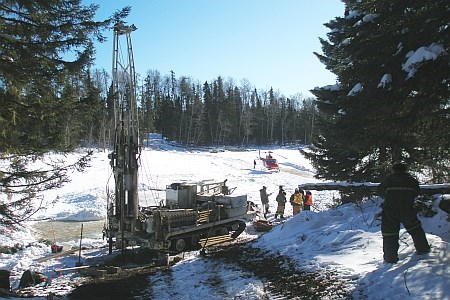A spokesman with the Ontario government anticipates no changes with the Ring of Fire Secretariat, the Crown agency charged with developing the infrastructure to reach the Far North mineral deposits.
Almost two months after a new cabinet was sworn in at Queen’s Park, there’s no indication what the Doug Ford government has in mind to “jump-start” industrial development in the James Bay lowlands, other than a bumper-sticker campaign promise to bulldoze new access roads into the remote region.
The responsibility of making it happen falls on the shoulders of Kenora MPP Greg Rickford, the Minister of Energy, Northern Development and Mines, and Minister of Indigenous Affairs.
A source with knowledge of the years of negotiations and the planning between the provincial and federal governments and the First Nation communities near the Ring of Fire told Northern Ontario Business that bureaucrats at both levels were prepared for the Secretariat to be either eliminated or restructured.
“The Ring of Fire Secretariat remains intact,” replied Brayden Akers, a spokesman in Rickford’s Queen’s Park office.
“Not sure who your source is, however, they are incorrect.”
The Secretariat was created by the McGuinty government in 2010 to coordinate all activities surrounding the development of the chromite and base metal deposits in a manner that minimizes the environmental impacts and addresses the socio-economic needs of the Indigenous communities.
It’s also not known if the new Ford government will continue, abolish or reboot the Regional Framework Agreement talks, initiated by the province in 2014, to negotiate with area communities on how Far North development should proceed.
The province’s Ring of Fire development strategy has always been a confidential process, leaving critics, opponents, and the provincial auditor general to question what tangible results have been achieved.
Nipissing MPP Vic Fedeli, the new finance minister in the Ford government, had his issues with the performance of the Secretariat in 2012.
In its last budget in March, the previous Wynne government finally made good on its long-standing promise by setting aside $1 billion for roads and mine-related infrastructure.
During the election, Marten Falls, one of the government’s First Nation community partners announced that the environmental assessment work on a north-south transportation corridor had started.
With this new government, it appears the Ontario Northland Transportation Commission (ONTC) could play a prominent role in the future mining camp.
On Rickford’s staff web page, listed among the currently vacant senior advisory positions includes one entitled “Ring of Fire & ONTC.”
A media query made to an Ontario Northland spokeswoman on how the ONTC figures into the transportation plan was flipped to the minister’s office to respond.
“As for the positions in our office, I can’t comment on HR matters,” said Akers.
The North Bay-based Crown agency has indicated on a few occasions it stands to ready to participate if politically instructed to do so.
Rail transport would be needed to move chromite to a smelter site to be processed into semi-finished ferrochrome, used in stainless steel production.
Noront Resources, the leading mining player in the Ring, has narrowed its choices for a processing plant down to Sault Ste. Marie and Timmins, with a final decision coming later this year.
Should Timmins be chosen, Ontario Northland's rail network connects with the city.
A short-line rail hauler would also be needed to transport chromite hundreds of kilometres south from the deposits to a potential railhead connecting with CN's transcontinental line near Nakina.



